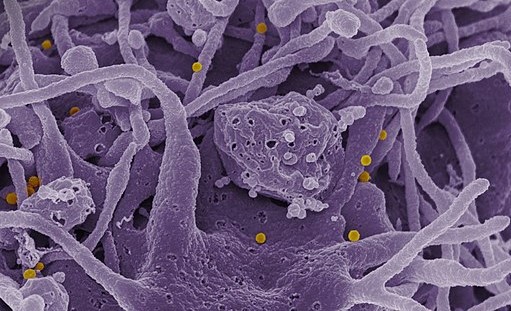Scientists in the UK have warned about a new ‘deadly virus’ which is ‘highly likely’ to arrive due to climate change. The UK government’s Science, Innovation and Technology Committee was informed of the arrival of the Crimean-Congo haemorrhagic fever (CCHF).
According to the World Health Organization (WHO), CCHF has a case fatality rate of 10-40% and is caused by a tick-borne virus (Nairovirus) of the Bunyaviridae family. It is endemic in Africa, the Balkans, the Middle East and some Asian countries. CCHF is also on the WHO’s list of ‘priority’ diseases.
However, there is concern that infections may not be picked up by doctors in the NHS, as previous they hadn’t been expected, the scientists informed the Committee.
Prof James Wood, head of veterinary medicine at Cambridge University, told the committee that it was “highly likely” that the disease would reach the UK at some point, but it was difficult to determine which viruses will arrive and when, the report said. “We don’t know what is going to arrive until it does. Some tick-borne infections such as Crimean-Congo haemorrhagic fever are highly likely to spread in the UK through our ticks at some point,” he said.
Further, the scientists noted that warmer weather in the UK will also pave the way for other diseases such as Rift Valley fever, Zika and breakbone fever.
According to Prof Sir Peter Horby, Director of the Pandemic Sciences Institute at Oxford University, climate change was mixing up the map of where to find certain illnesses. “Dengue, which is classically a South American, Southeast Asian disease and is hyperendemic in those countries [has] spread North, you’re now seeing transmission in the Mediterranean,” he was quoted as saying.
According to Dr Sabine Kapasi, Public Health Leader, UNDAC & Geneva, the extensive distribution of Hyalomma marginatum ticks, which carry the CCHF virus, and their continuous presence increase the likelihood of transmission from animals to humans. “Climate change and the movement of livestock and wildlife can contribute to the expansion of CCHF’s geographic range, as seen by its recent spread from the Balkans to Central and Western Europe. The disease’s high fatality rate and the lack of effective treatments or vaccines add to the concerns,” she told indianexpress.com.
As for the symptoms, Dr Kapasi said that it includes fever, muscle aches (myalgia), dizziness, neck pain and stiffness, backache, headache, sore eyes, and sensitivity to light (photophobia). “Early on, there may also be nausea, vomiting, diarrhea, abdominal pain and sore throat, followed by mood swings and confusion. After a few days, the agitation may give way to sleepiness, depression, and weakness. Other clinical signs include a fast heart rate (tachycardia), enlarged lymph nodes (lymphadenopathy) and a rash called petechiae (caused by bleeding into the skin) on internal mucosal surfaces, such as the mouth and throat, as well as on the skin. Hepatitis is often present, and severely ill patients may experience rapid kidney deterioration, sudden liver failure or pulmonary failure after the fifth day of illness,” she informed.
Concluding, she noted that currently, there is no specific treatment for CCHF. “The primary approach involves providing general supportive care and managing symptoms. However, the antiviral drug ribavirin has been used with apparent benefit in treating CCHF infections. Both oral and intravenous formulations of ribavirin appear to be effective.”
Source Indian Express

















